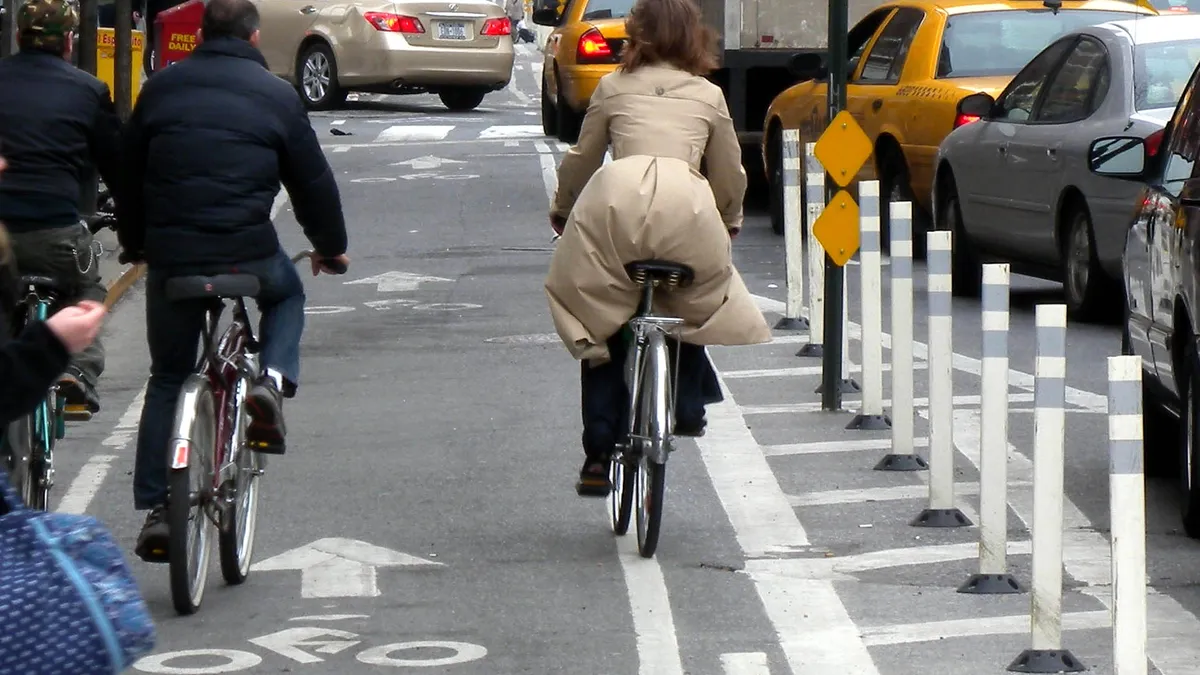Dive Brief:
- The New York City Department of Transportation (DOT) is testing a pilot program at 50 intersections to give cyclists a head start before vehicular traffic is allowed to proceed or turn, according to Streetsblog NYC and others.
- Cyclists at the designated intersections would follow the "leading pedestrian interval" (LPI) signals that already give pedestrians a seven- to 11-second head start for crossing before traffic can turn. Turning cyclists still have to yield to pedestrians.
- DOT will install temporary signs informing cyclists of the change during the pilot, which runs through October.
Dive Insight:
Last year, more than 800 LPIs were added to New York intersections, bringing the city's total to more than 2,500. The city credits the LPIs with a 37% reduction in pedestrians and cyclists killed or severely injured at the intersections where they have been installed.
In fact, Mayor Bill de Blasio's office last week released its annual Vision Zero report, which reviews citywide initiatives to reduce traffic deaths. The report shows that 2017 was the fourth consecutive year of traffic death declines since the program's inception in 2014. In addition to installing more LPIs, some safety measures have included increasing enforcement, changing street design and lowering speed limits.
LPIs have been used for a number of years in New York and in other cities including Los Angeles, Seattle and San Francisco. They're lauded for saving lives by giving pedestrians the chance to get further into the intersection and become more visible to motorists. LPIs also are considered a cheaper alternative to completely reworking an intersection to boost pedestrian safety.
Although cyclists get through intersections faster than pedestrians, they regularly battle with motorists for road priority. The city's research indicated that many cyclists already had been following LPI signals to cross intersections with pedestrians and no major issues have yet been identified, so the pilot will attempt to make it official, at least temporarily.
Cities, such as Washington, DC, have been successfully using the LPI tactic with cyclists, and New York's pilot will likely further increase the practice's visibility and consideration by other cities.












